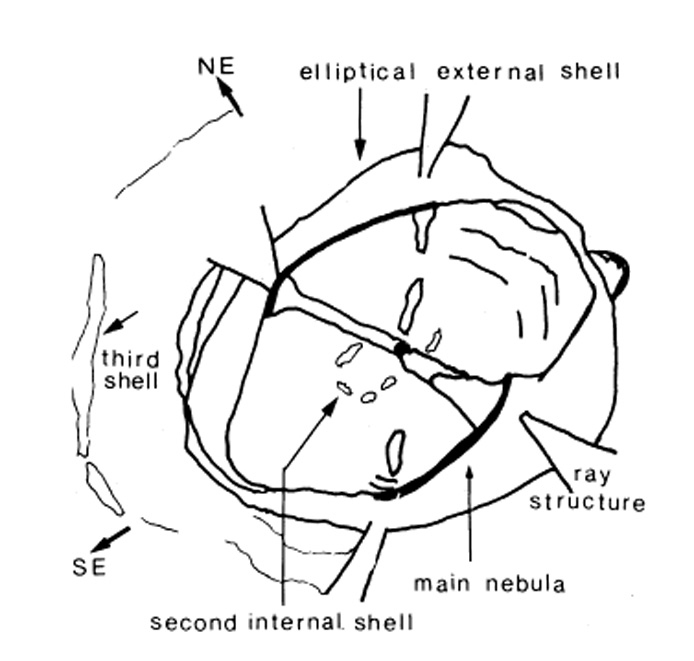
M27 has the distinction of being the first planetary nebula ever discovered. Messier's description of it as an "oval nebula without stars" was followed by John Herschel's comparison to a dumbbell which later became its popular name. The brightest part of the nebula is about 6 arc minutes (2.4 light years) wide but a faint outer shell exists extending to 15 arc minutes. The nebula is apparently expanding at a rate of 6.8 arc seconds per century. This value leads to a calculated age of 3000 to 4000 years. The central star is a white dwarf with a temperature of 85,000 degrees K. High energy radiation from the dead star is absorbed by the gases of the nebula and reemitted predominantly (about 90%) in green light at 500.7 nm due to ionized oxygen. Other less abundant elements also present in the expanding shell include hydrogen, helium, nitrogen and neon.
Studies of M27 reveal a complex triple shell structure uncommon among planetary nebulae. The outermost shell has a very low surface brightness and a complex structure. It is recorded well only through narrowband filters and probably represents gases expelled during earlier mass ejection periods of the dying star. The elliptical shape of M27 is due to viewing the nebula at its equatorial plane as most planetary nebulae have a cylindrical bilobed shape.
